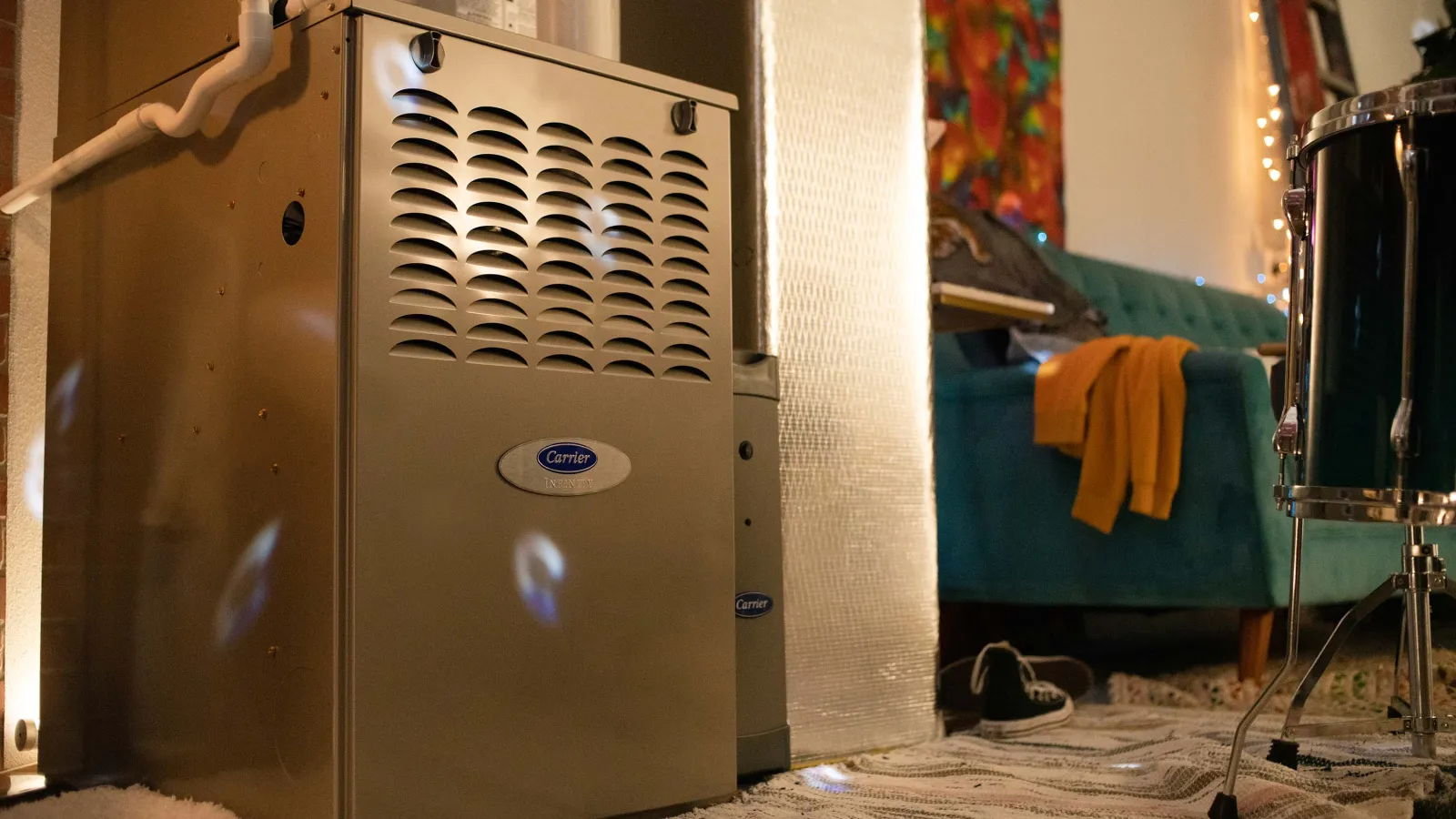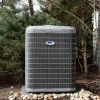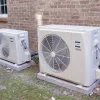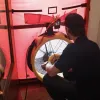After more than a decade spent exploring Atlanta’s residential HVAC scene, we’ve seen just about every problem you can imagine. Big problems, small problems, unusual problems, trivial problems, expensive problems… You name it, we’ve seen it.
And oversized systems are among the most common HVAC problems in our area.
In fact, it’s unusual that a week goes by that we don’t encounter a system that’s too big for the house it’s tasked to cool and heat. The problem is that widespread.
But wait. Isn’t a bigger HVAC more powerful and, therefore… better?
That’s a common misconception. No, a bigger HVAC system isn’t better. There are actually proper tonnage (air conditioning) and BTU (heating) sizes for every home. Bigger HVAC equipment isn’t better because…
- Oversized air conditioners don’t dehumidify very well. All that extra tonnage cools your house down very quickly, so the AC cycles are short. Longer AC cycles are more effective at clearing out humidity. Shorter ones aren’t. So even though that oversized AC brings your home down to 73 degrees really quickly, it has a hard time keeping your relative humidity below 60%. The bottom line? You’re hot, sweaty, and uncomfortable – even though the thermostat says you shouldn’t be. Oh, and subpar dehumidification leads to subpar indoor air quality.
- Oversized furnaces turn your home into a scorch chamber. In winter, you want consistent heat throughout your home. A properly sized furnace can give you that. An oversized one blasts you with scorching hot air and satisfies the thermostat right away. As a result, you have hot and cold spots throughout your home. And if your bed is right under a vent, you feel like you’re sleeping inside a volcano.
That’s why oversized HVAC systems are best avoided. They actually make you less comfortable – not more.
So, why are so many systems oversized in spite of these crippling problems? Let’s explore the most common reasons.
1. Most HVAC salespeople don’t understand HVAC design.
Being good at selling HVAC equipment doesn’t make you good at selling the right HVAC equipment.
Here’s how things usually go down. An HVAC salesperson carries a price book from an equipment supplier. The book includes matchups for different system components – ACs, furnaces, and coils. If you consult the price book, you might find that a 3-ton AC pairs with an 80,000 BTU furnace.
Ok, fine. The thing is, that same 3-ton AC might also pair with a 60,000 BTU furnace. You can go either way, but the option isn’t always reflected in a supplier’s price book.
What furnace size makes the most sense? Well, the HVAC company should perform a load calculation to determine what size is best for your home. This calculation is called a “Manual J.” Salespeople don’t usually do load calculations, though. They just replace what you’ve got based on rules of thumb (more on those in just a sec) or they look at the price book and say, “Ok, an 80,000 BTU furnace it is.”
So in the Atlanta area – and you can file this under “nice to know” – most 3-ton air conditioners don’t need to be paired with an 80,000 BTU furnace. Unless you live in a super-leaky house with no insulation, typical heating loads don’t require that much power.
And yet, it’s what a lot of people have. Why? Because of the matchup in the price book. Or because the salesperson thinks you should replace what’s already there.
So, how should the salesperson go about system selection? Here’s what we do:
- Perform a Manual J load calculation. This is a fairly intense process and involves measuring several things around your house – square footage, orientation, number of windows, insulation levels, and more. For accuracy in our Manual J calculations, we usually perform a blower door test as well. After we’ve gathered the data, we calculate the perfect tonnage/BTU pairing for your home.
- Use Manual S to determine the best matchup. Depending on the load requirements, one matchup will be more advantageous than the others. Manual S shows which one makes the most sense. There might still be sizing issues, but they won’t be as severe. Besides, we can usually eliminate them when we…
- Present you with options that mitigate sizing issues. For the hypothetical 3-ton system we discussed, Manual J might show us that even a 60K BTU furnace is overkill. But the 60K BTU pairing is the smallest furnace that works in a 3-ton matchup! Thankfully, it’s not that big of a problem. When this happens, we can suggest other options – like a two-stage gas valve – that ensure the system doesn’t run at full capacity when it doesn’t need to. That way, you avoid most problems associated with oversizing.
Easy, right? It actually is. This approach should be the foundation upon which honest, effective, reliable HVAC service is built. Sadly, it’s the exception rather than the norm.
There are lots of 3-ton/80K BTU systems in Atlanta homes. Maybe you’ve got one?
2. You’ve done some energy upgrades.
Adding insulation saves energy because it helps your home retain (and avoid gaining) heat depending on the season. The same goes for crawlspace encapsulation, air sealing, and, to a lesser extent, window replacement. These projects help you save energy, and that’s a good thing.
Until it isn’t. Perform enough of these upgrades,and your home might not require as large of an HVAC system. That might sound good, but it can lead to problems:
- If your current system was sized properly, energy upgrades might suddenly render it too big. That doesn’t mean you should avoid making the improvements. Just be aware of the HVAC consequences.
- If your system was too big to begin with, those energy improvements will make it even more oversized than before.
Yes, we’re saying that energy upgrades can actually make you less comfortable! It might seem counterintuitive, but it’s true.
This problem is particularly serious when it creates a “cycle of oversizing.” The HVAC salesperson isn’t considering the energy improvements you made and sells you another system that’s too big for your home. In the name of efficiency, many people even go with a 95% furnace (it puts out more heat!) instead of replacing an 80% unit with something similar, exacerbating the problem.
We see this sometimes when somebody has been through their utility company’s energy program. They save money each month, but they’re too hot in the summer and don’t enjoy consistent heating during the winter.
To avoid this problem, we try to anticipate it before doing any home performance upgrades. If you’re right on the line where an energy improvement might result in oversized HVAC, we’ll let you know beforehand so you can make the best decision for your home.
3. You live in a condominium or a townhouse.
In the HVAC world, “rules of thumb” often dictate equipment sizing. Using a common rule of thumb mandating 1 ton of cooling capacity for every 600 square feet, a contractor might look at a house and say, “Ok, this one’s 2,400 square feet. Cool, dude! Let’s put in a 4-ton air conditioner.”
Not cool, dude.
That 2,400 square-foot home might be in the middle of a shady glen. Or it might have R-40 insulation in the attic, crawlspace, and walls. Perform a Manual J load calculation, and you might find that you only need a 3-ton system. It happens.
And for condos and townhouses, rules of thumb almost always result in oversizing.
A condominium in the middle of a building might only have one exterior wall. In the summer, it doesn’t gain as much heat as a house with four exterior walls. And in the winter, it gains heat from neighboring units.
For these reasons, condos and townhouses defy common rules of thumb for HVAC sizing. They’re usually better off with smaller systems than you’d install in similarly sized, detached houses.
The same goes for homes with finished basements. If your main level is over a conditioned space, you won’t need as much heating and cooling capacity.
You’d think this would be obvious, but HVAC contractors oversize systems in condos and townhouses all the time. As always, a Manual J load calculation will reveal the proper HVAC tonnage and BTUs for your condo.
4. Big, beautiful shade trees surround your home.
Remember when we mentioned the “shady glen” in the example above. Houses in the woods have different heating and cooling needs from houses built in open spaces.
In summer, they gain less heat. In the winter, the effect is less pronounced (leaves fall off the trees), but they still have less sun exposure than, say… new construction in an area where all the trees were just removed.
They might need lower AC tonnage and more BTUs than houses that aren’t built in the shade. The only way to know for sure – and you knew this was coming, right? – is to perform a Manual J load calculation.
Here’s a scenario to consider: Let’s say you just bought a house built in 1997. It’s in the shade. The previous owners also increased the attic insulation and installed new windows with low-e glass. And – as if the seller wasn’t cool enough – they put in a brand new HVAC system just before you moved in. Awesome, right?
Not if they replaced the original one from 20 years ago.
Think about it. The energy improvements might have negated the need for the HVAC power needed 20 years ago. And those shade trees? They were just twigs when the house was built. The home used to gain a whole lot more heat than it does now. If you’re using the same size HVAC system as the original, you might be really uncomfortable.
The lesson? Manual J, Manual J, Manual J. Always. No excuses.
A few hours spent performing a load calculation can prevent an entire decade of discomfort. At PV, we always perform a Manual J load calculation before installing a new system. Sometimes, we use Manual J to troubleshoot comfort problems.
Oversized HVAC systems are common, but they shouldn’t be. Choose your contractor wisely, and it’s a problem you’ll never have.






